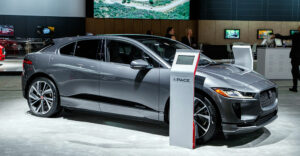
I’m a home automation nut. When I moved into my home a friend and I spent a week and $2,000 replacing all of the wall switches and many of the plugs with remote switches. I can now turn on and off my lights and sprinklers from my bed. (The latter is a handy anti-barking tool: Wet dogs bark less.)
In the 1980s I got a little carried away and computerized my piano. I used it to terrorize dates, which I’m now sure was counterproductive.
Home automation has historically been the plaything of the few, and typically the best systems are built into the home and are very expensive. That remains true for most of this industry, but the situation is changing.
This sector reminds me of the pre-WinTel PC market: cool stuff that’s too expensive and too difficult to use. Technology is creeping in from the computer market, however, and companies like Microsoft, Intel and HP are taking an ever-larger role. This was never more obvious than at the EHX show I attended last week.
There are two parts to this story, home automation and media distribution. We’ll cover home automation this week and media distribution next week.
X10: The Current Standard
The traditional technology, and the one I’ve been using since the early 80s, is X10. Yes, this is the same company that drove us crazy a few years ago with pop-ups suggesting we hide cameras in inappropriate places. The company is trying to distance itself from its past as it launched its improved Pro line of products, which are vastly more reliable than the products I’ve come to know. At the heart is the new Active Home Professional product, which retails for $50 and has been updated to address both wired and wireless control.
It marks a huge improvement because it is both a universal wireless receiver and a controller, and the user interface has been brought up to today’s standards. You do need a PC to program it, but once programmed it will run on its own.
Considering that most of the controllers in the market sell for well over $200, this one, at $50, is a huge value. X10 also offers a $100 bundle with four remote switches and three wireless remote controls (one fits on your keychain), which has to be the leading value in the entire segment.
There remain a large number of companies that support the X10 standard with security systems, thermostats, key fob remote controls (some cars have X10-compliant transmitters built in), or voice-controlled lighting systems. Much of this stuff has been around for awhile, and this is the weakness of the platform. While the world has changed a lot in the last 20 years, X10 hasn’t changed that much. As you would expect, competition is starting to ramp up.
Z-Wave and Insteon: The Challengers
There are two major challengers showing up this year and next. The first, already on the market, is Z-Wave, which replaces the often unreliable wireline-based communications method with a wireless technology. It is the first real contender for the top spot.
Z-Wave doesn’t integrate with existing X10 products, and the cost of the radio in each device makes the solution more expensive. For instance, for the $100 you’d spend on the X10 bundle, you could buy just two consumer switches (at about $45 each) or one and a half professional switches ($65) from Intermatic. (This is still far less expensive than some of the more proprietary products that are also available on the market.) Also, because the system is wireless, you could have interference and range problems with some installations. I have to admit that the professional products were really cool looking with glowing lights and a 21st-century industrial design, but they won’t be out until mid-2005.
The most interesting challenger is from Smarthome, which is where I actually bought most of my own home control and video distribution gear. It is called Insteon, and it uses both wired and wireless technology to move the signals around. This line, due out late next year, is so powerful because it was designed out of a knowledge base that resulted from selling X10 products for years to both consumers and professional installers.
With price points between Z-Wave and the low end of X10, Smarthome’s Insteon has the strongest chance of creating an alternative platform, and it is licensing out (with one Fortune 100 company already on tap) to drive this technology through the market. Expect the product to be easy to install, relatively reliable, and compatible with in-place X10 products (so existing users can migrate over time).
Incidentally, this is the same strategy Microsoft has historically used against competitors and is now using against Novell: Improve interoperability and then ease the customer onto the new platform. Smarthome is showing that this “embrace and extend” strategy has broad applicability.
X10 isn’t standing still and clearly sees the threat, so things could get really interesting when these products launch next year. But the real push will likely be for the centralized computers that control this stuff and tie everything together.
The Computerized Home
PC technology is embedded in many of these products. Typically the high-end home automation controllers were PCs, and strangely enough most seemed to be running Windows XP. I think they should have used embedded Windows instead, given that they are basically dedicated to home control.
I expected to see more Linux, but it was almost non-existent. And as expected there was no Apple presence, though Pelham Sloane, the company Apple apparently copied to build the new iMac, was there.
As I’ve pointed out previously, the Microsoft Media Center is expected to pick up home automation as a feature in a future offering, and Intel has been demonstrating this capability at its own shows. Surprisingly, two of the most interesting products were a Transmeta-based home-control tablet PC and a VIA-based in-wall touch panel from Nobu. In this market heat and noise are the killers, and both Transmeta and VIA have positioned their offerings well.
Over time, as prices drop, I expect switches will be centralized and controlled virtually, much as they now are in new industrial buildings. This will allow much more flexibility in how homes are initially laid out and how quickly they can be built, and it could provide a nice up-sell opportunity for the upscale tract home builder, who now often can’t add home automation once the sheet rock is installed.
Back in the ’80s I knew home automation was coming. But I had no idea it would take this long, and there have been a number of times, I’m sure, that my wife wished it would take several decades longer.





















































